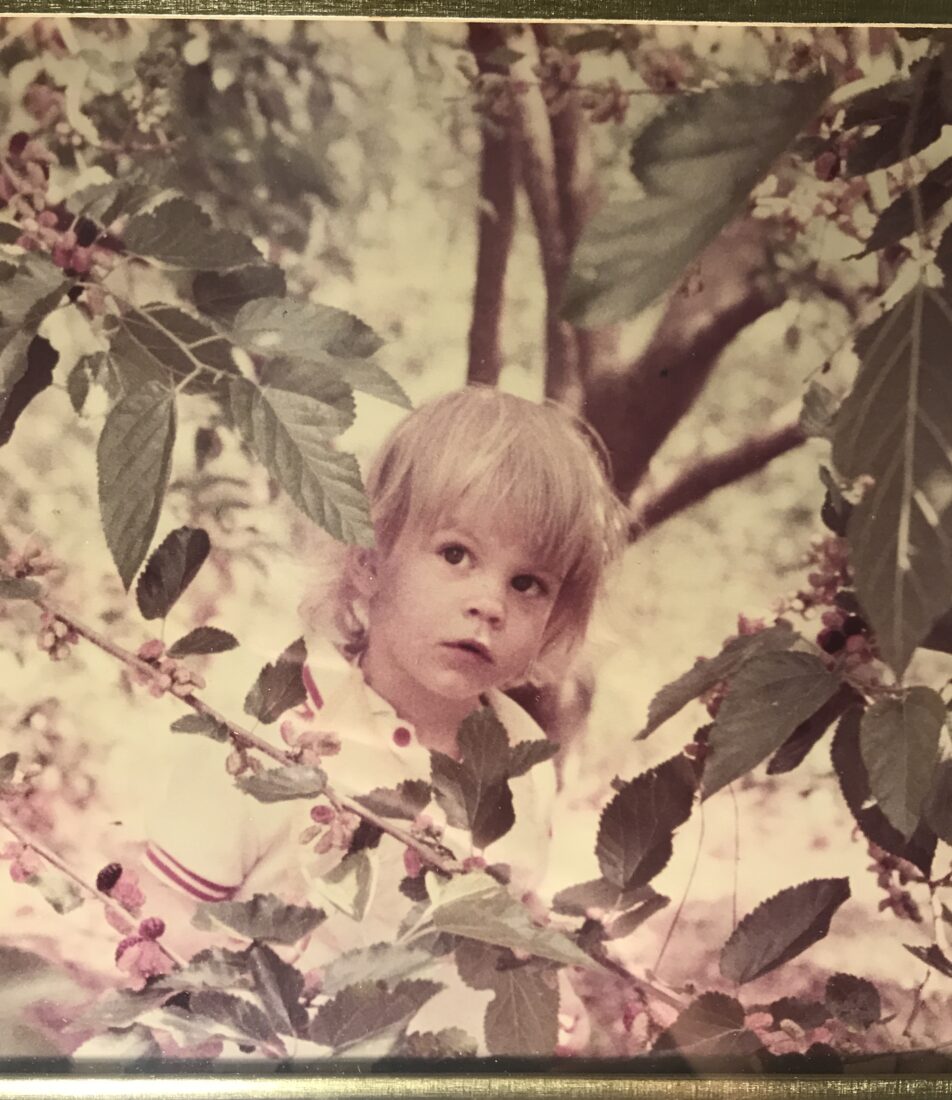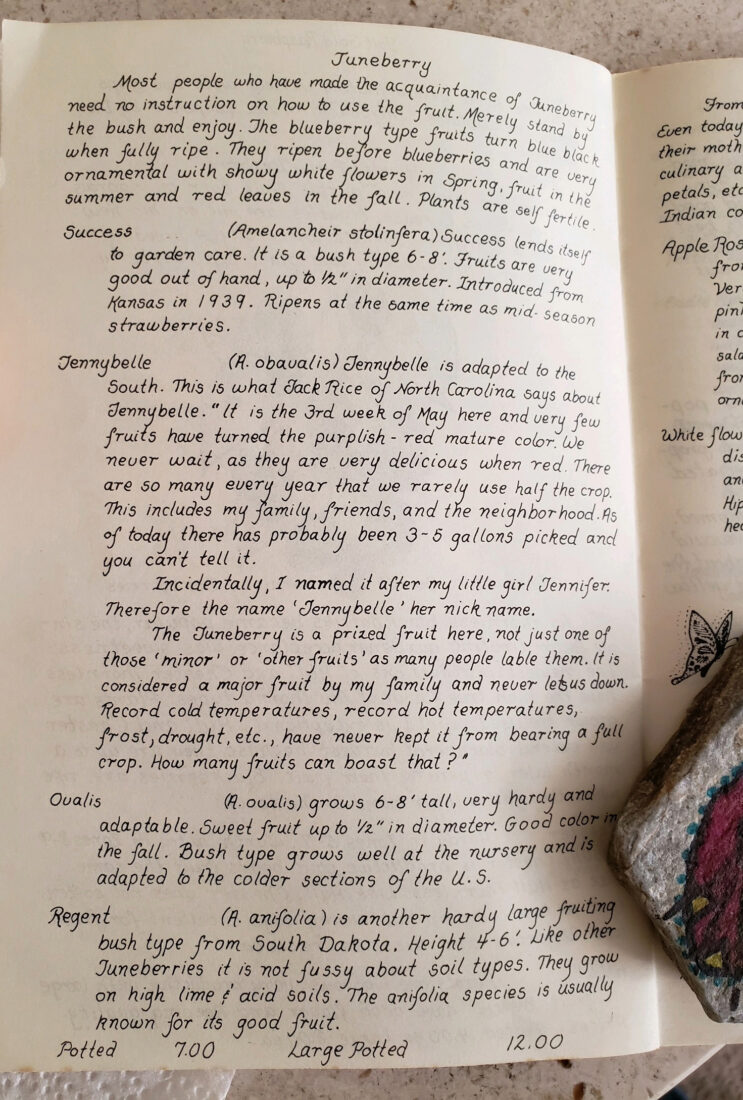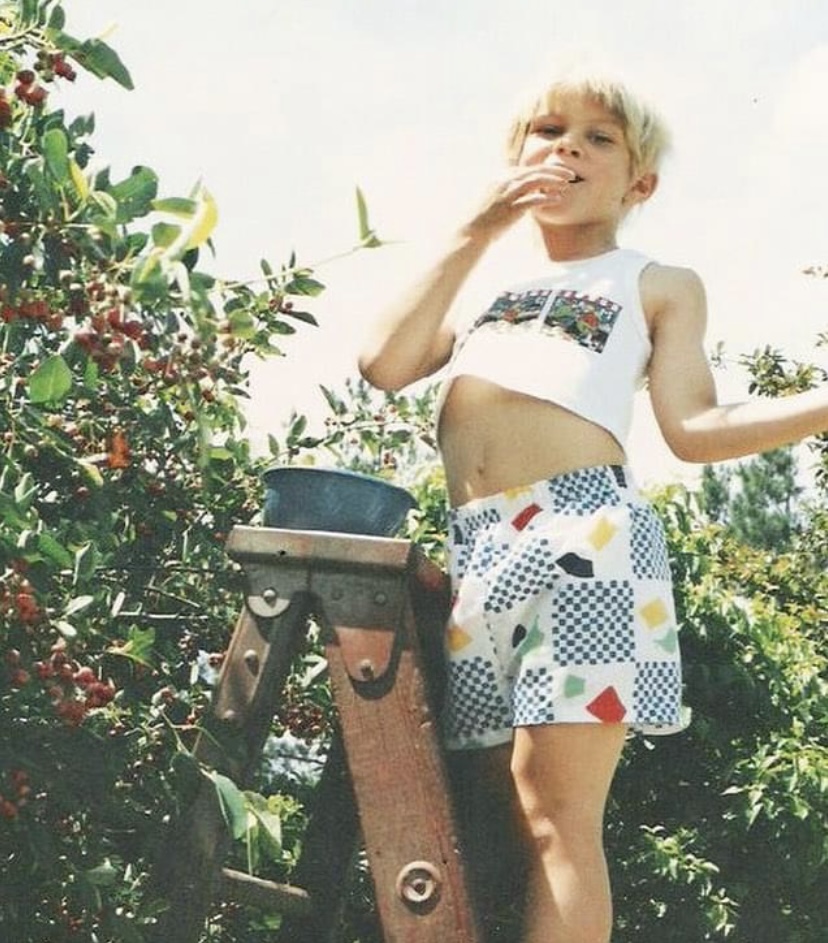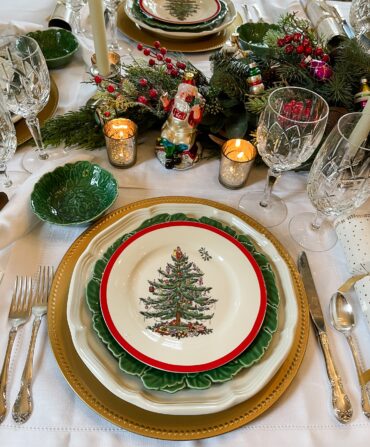I knew summer was on its way at the first sign of blueish-purple berries on our juneberry plant. It grew right across from my dad’s Blue Goose, his bluebird-hued pickup truck with the distinct smells of leather, gas, and cigarettes that still waft through my mind when I think about my childhood home in Laurinburg, North Carolina. Soaring to fifteen feet tall, the plant lined the curvy driveway along our big front yard. I had no idea then that my dad was becoming a bit of a Johnny Juneberry-Seed, that this very plant he named for me, that I so loved, would spread across the South.

Juneberry shrubs and trees are native to every state in the U.S. except Hawaii and can be found all over Canada. Yet I’ve talked to many people who’ve never heard of it or think it’s invasive. (No way!) Its scientific name is Amelanchier, and folks call it shadbush, serviceberry, and saskatoon depending on the area. We just called it juneberry for the time frame of its fruiting, and we were lucky to get a few short weeks of nosh time. By mid-June, the tree’s biggest predators—the birds and myself—had polished off any sign of juicy, ripe berries.
The tree seemed daunting when I was a child; it was a rite of passage to climb to the top without parental supervision. As I got older and grew taller, the tree appeared smaller but I never stopped climbing our old wooden ladder to pick the not-so-forbidden fruit. “You’d take a large bucket up to the tree and never fill it as you’d eat the juneberries as fast as you picked them,” my mom remembers. We never made pies or cobblers or jams—we simply enjoyed them in peak ripeness, straight from the source.

The ripe fruit of a juneberry is dark purplish, almost tricking you into thinking it’s a highbush blueberry, but it’s not. Rather, imagine that a blueberry and a raspberry had a baby, with hints of apple and dark cherry, and add a surprising almond flavor from the tiny, edible seeds. I can still remember my dad hollering from the ground: “You’re going to make yourself sick if you don’t stop!” My response was an ear-to-ear grin with berry-stained lips—after all, he had named this tree just for me.
My father, Jack Rice, was an elusive celebrity in the Southern plant world, a man who practiced organic and regenerative gardening before those became popular concepts. The juneberry tree in my childhood yard isn’t just any tree; in the early 1980s, my dad allegedly dug up this tree on the side of the road during a trip, cultivated it in our yard, and named it after my own childhood nickname, Jennybelle. He passed along cuttings to other plant nerd friends and anyone who took a liking to the coveted fruit, as well as to nurseries around the Southeast. From there, the Jennybelle Juneberry became a coveted tree—but I never knew its fame until after my dad was gone.
After my father’s unexpected death, ironically on my birthday, in 2017, I began to research his gardening practices and writings and uncovered many journals and magazines in which he was quoted. In Edible Landscaping, a plant nursery’s seasonal publication, my dad wrote about the Jennybelle: “It is the 3rd week of May here and very few fruits have turned the purplish-red mature color. We never wait, as they are very delicious when red. The Juneberry is a prized fruit here, not just one of those ‘minor’ or ‘other fruits’ as many people label them. It is considered a major fruit by my family and never lets us down.”

To this day you can order Jennybelle Juneberry plants from several places, including Edible Landscaping. On the company’s website, D. Morris of Winston Salem, North Carolina, writes: “By far the best juneberry I have ever tasted and an ornamental plant to boot. Jennybelle Juneberry was introduced to me by Jack Rice of North Carolina in 1987. Jack named the plant after his daughter Jennifer. He described it as a must-have plant, prized for its fruits, dependability, and adaptability to all extremes of weather.”
I’ve long moved on from my childhood home, but I still get that burst of nostalgia and a hankering for the taste of juneberries every time the spring air warms. I’ve yet to grieve my dad’s death, and I don’t know if I ever will completely, but I’m happy to see his garden legacy continue as new people discover our Jennybelle. Some friends of mine in Durham recently told me they planted one in their backyard.
A couple weeks ago, I stayed with my friend Caroline Corvaglia at her agriturismo, Podere Aiole, in the Val d’Orcia region of Tuscany. We were walking around the outskirts of the garden one day, weeding and cleaning, when we identified a youthful juneberry tree. It’s about two feet tall, with a few green leaves, and steadily growing. I assured Caroline it was a fruit she’d never forget and smiled thinking about her son, Ettore, one day climbing up a ladder to pick the berries and celebrate summer’s arrival.








